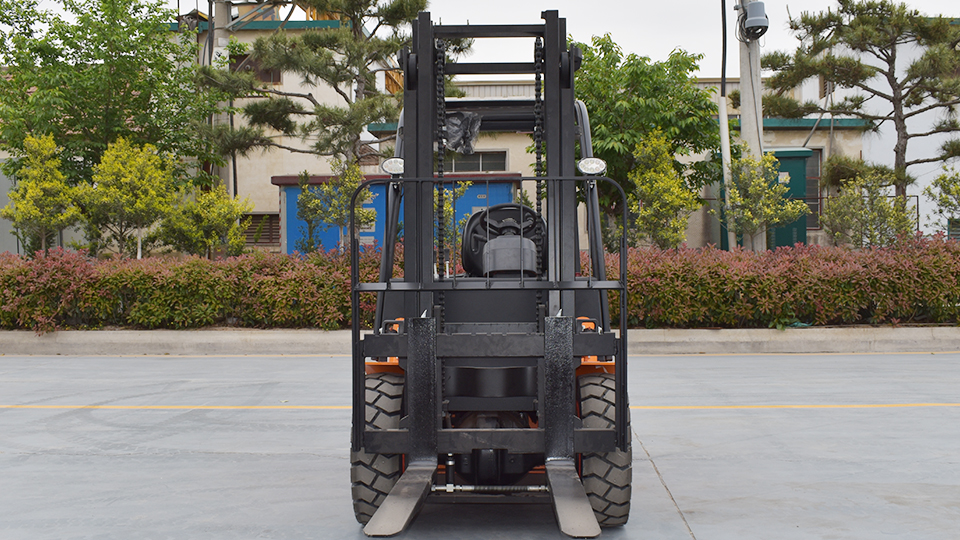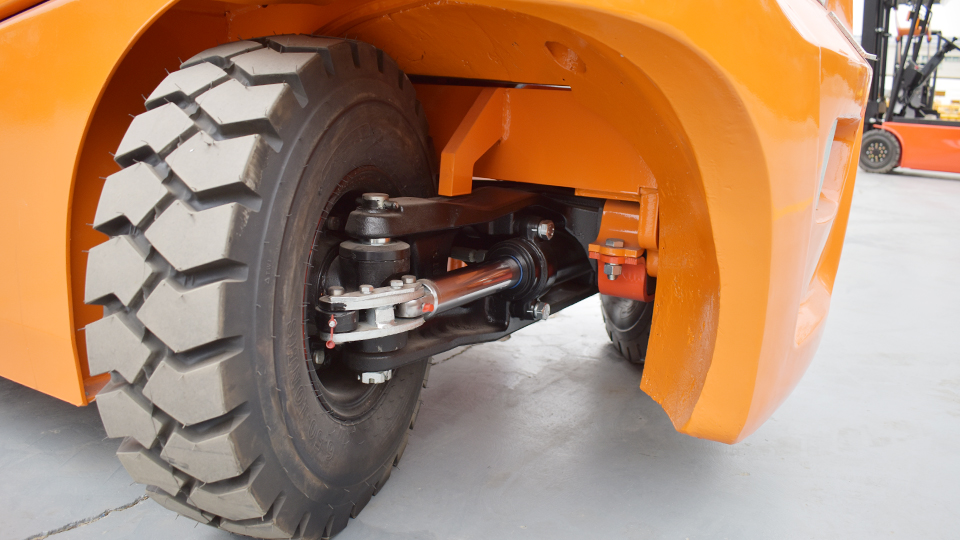
Are Electric Forklifts Cheaper? A Comprehensive Cost Analysis
In the realm of material handling, the choice between electric and internal combustion (IC) forklifts, particularly diesel-powered ones, is a critical decision that impacts operational efficiency and the bottom line. While the initial purchase price often looms large, a thorough cost analysis must extend beyond this upfront investment to encompass the total cost of ownership (TCO) over the forklift's lifespan. This article delves into a detailed comparison of the costs associated with electric and diesel forklifts, examining factors such as initial purchase price, energy/fuel consumption, maintenance, lifespan, and other operational considerations to determine which technology ultimately proves more economical.
1. Initial Purchase Price:
The sticker price is often the first point of comparison, and here, diesel forklifts typically hold an advantage. Generally, an electric forklift with comparable lifting capacity and features will have a higher initial purchase price than its diesel counterpart. This price difference is primarily attributed to the cost of the battery and the charging system included with electric models.
For instance, a standard electric forklift with a 5,000 lb lifting capacity can range from $20,000 to $45,000, with the battery and charger adding an additional $2,500 to $5,000 to the total cost. In contrast, a similar capacity diesel forklift might range from $15,000 to $40,000. This initial price gap can be a significant barrier for businesses with tight capital budgets.
However, it's crucial to recognize that this higher upfront cost for electric forklifts can be viewed as a prepayment for a significant portion of their operational energy needs.
2. Energy/Fuel Consumption Costs:
This is where electric forklifts often demonstrate a significant long-term cost advantage. The cost of electricity to power an electric forklift is typically substantially lower than the cost of diesel fuel to operate an IC engine over the same period.
Consider a scenario where a 5,000 lb forklift operates for approximately 2,000 hours per year. A diesel forklift could consume around $4,500 in fuel annually, depending on local diesel prices and fuel efficiency. In contrast, an equivalent electric forklift might only consume around $700 in electricity for the same operating hours. This translates to an impressive energy savings of approximately 85% per truck per year.
Over the typical lifespan of a forklift (5-7 years for the battery and potentially longer for the chassis), these energy savings can accumulate to a substantial sum, often exceeding the initial price difference between the two types of forklifts.
3. Maintenance Costs:
Electric forklifts generally have lower maintenance costs compared to diesel forklifts due to their simpler mechanical design. Electric motors have fewer moving parts than internal combustion engines, eliminating the need for regular oil changes, filter replacements (oil, air, fuel), spark plug replacements, and other engine-related maintenance tasks.
Maintenance on an electric forklift primarily involves checking and maintaining the battery (watering for lead-acid batteries, although lithium-ion batteries are virtually maintenance-free), inspecting electrical connections, hydraulic fluid levels (for lifting mechanisms), tires, and brakes. The reduced number of moving parts also translates to fewer potential points of failure, leading to lower repair costs and less downtime.
Studies have indicated that the annual maintenance costs for an electric forklift can be approximately one-third of what it costs to maintain a similar diesel forklift. This can result in significant savings on labor costs for maintenance personnel and the cost of replacement parts over the forklift's operational life.
4. Battery Costs and Lifespan:
The battery is a significant component and a recurring cost associated with electric forklifts. Traditional lead-acid forklift batteries have a typical lifespan of around 1,000 to 1,500 charging cycles, which, in a single-shift operation with proper maintenance, translates to roughly five years. Lithium-ion batteries, a more recent and increasingly popular option, offer a longer lifespan, typically ranging from 2,000 to 3,000 cycles, potentially lasting for 10 years or more in single-shift applications.

The replacement cost of a forklift battery can be substantial, ranging from $7,000 to $9,000 for a lead-acid battery and potentially more for a lithium-ion battery. Therefore, factoring in the battery replacement cost is crucial when calculating the TCO of an electric forklift.
However, the longer lifespan and lower maintenance requirements of lithium-ion batteries can make them a more cost-effective option in the long run, despite their higher initial cost. Furthermore, advancements in battery technology are continually improving lifespan and reducing costs.
5. Charging Infrastructure and Efficiency:
Electric forklifts require charging infrastructure, which can include standard chargers or fast chargers. The cost of installing charging stations needs to be considered. Standard charging typically takes 8-10 hours for a full charge, often requiring dedicated charging areas and potentially spare batteries for continuous operation in multi-shift environments (for lead-acid). Lithium-ion batteries often support opportunity charging (short charges during breaks), eliminating the need for battery swapping in many applications.
The energy efficiency of electric forklifts is also generally higher than that of diesel forklifts, meaning that a larger percentage of the energy consumed is directly used for work, minimizing waste in the form of heat and noise.
6. Lifespan and Residual Value:
The overall lifespan of the forklift chassis itself can be comparable between electric and diesel models, often depending more on the quality of manufacturing and the intensity of use and maintenance. However, the lifespan of the power source (battery vs. engine) differs.
Electric forklifts may have a potentially longer overall lifespan due to less wear and tear on mechanical components. However, the battery will eventually need replacement, which affects the residual value. Diesel forklifts, on the other hand, may face higher repair costs as their engines age and can be subject to stricter emissions regulations over time, potentially impacting their resale value.
7. Environmental and Operational Factors:
Beyond direct financial costs, several other factors can influence the overall economic viability of electric versus diesel forklifts:
Emissions: Electric forklifts produce zero tailpipe emissions, making them ideal for indoor operations where air quality is crucial for worker health and safety. Diesel forklifts emit harmful pollutants, requiring ventilation systems in enclosed spaces, adding to operational costs.
Noise Levels: Electric forklifts operate much more quietly than diesel forklifts, contributing to a more comfortable and safer working environment, potentially reducing noise-related fatigue and communication issues.
Maneuverability: Electric forklifts, particularly three-wheel models, often offer better maneuverability in tight spaces due to their more compact designs.
Government Incentives: Depending on location and regulations, there may be government incentives, tax credits, or rebates available for businesses adopting electric vehicles and equipment, which can further
8. Total Cost of Ownership (TCO) Analysis:
A comprehensive TCO analysis considers all costs associated with owning and operating a forklift over its entire lifespan. This includes:
Initial purchase price
Energy/fuel costs
Maintenance and repair costs
Battery replacement costs (for electric)
Charging infrastructure costs (for electric)
Operational downtime costs
Potential resale value
While the initial investment in an electric forklift is typically higher, numerous studies and real-world applications demonstrate that their lower energy and maintenance costs often lead to a significantly lower TCO over the long run, especially in applications with moderate to high utilization rates. The breakeven point, where the cumulative costs of an electric forklift become lower than those of a diesel forklift, can occur within a few years of operation.

Conclusion:
While diesel forklifts may present a lower initial purchase price, a comprehensive analysis reveals that electric forklifts can be cheaper in the long run due to their significantly lower energy consumption and reduced maintenance requirements. The higher upfront cost of electric forklifts, primarily due to the battery and charging system, can be offset by substantial savings on fuel and upkeep over the operational life of the equipment.
The optimal choice between electric and diesel forklifts depends on various factors specific to the application, including operating environment (indoor vs. outdoor), utilization rates, budget constraints, environmental concerns, and long-term cost considerations. For indoor operations and businesses prioritizing lower operating costs and environmental sustainability, electric forklifts often emerge as the more economical option over the long term. As battery technology advances and costs continue to decline, the economic advantages of electric forklifts are likely to become even more pronounced. Therefore, businesses should conduct a thorough TCO analysis based on their specific needs and operating conditions to make an informed decision that aligns with their financial and operational goals.
Name: selena
Mobile:+86-13176910558
Tel:+86-0535-2090977
Whatsapp:8613181602336
Email:vip@mingyuforklift.com
Add:Xiaqiu Town, Laizhou, Yantai City, Shandong Province, China